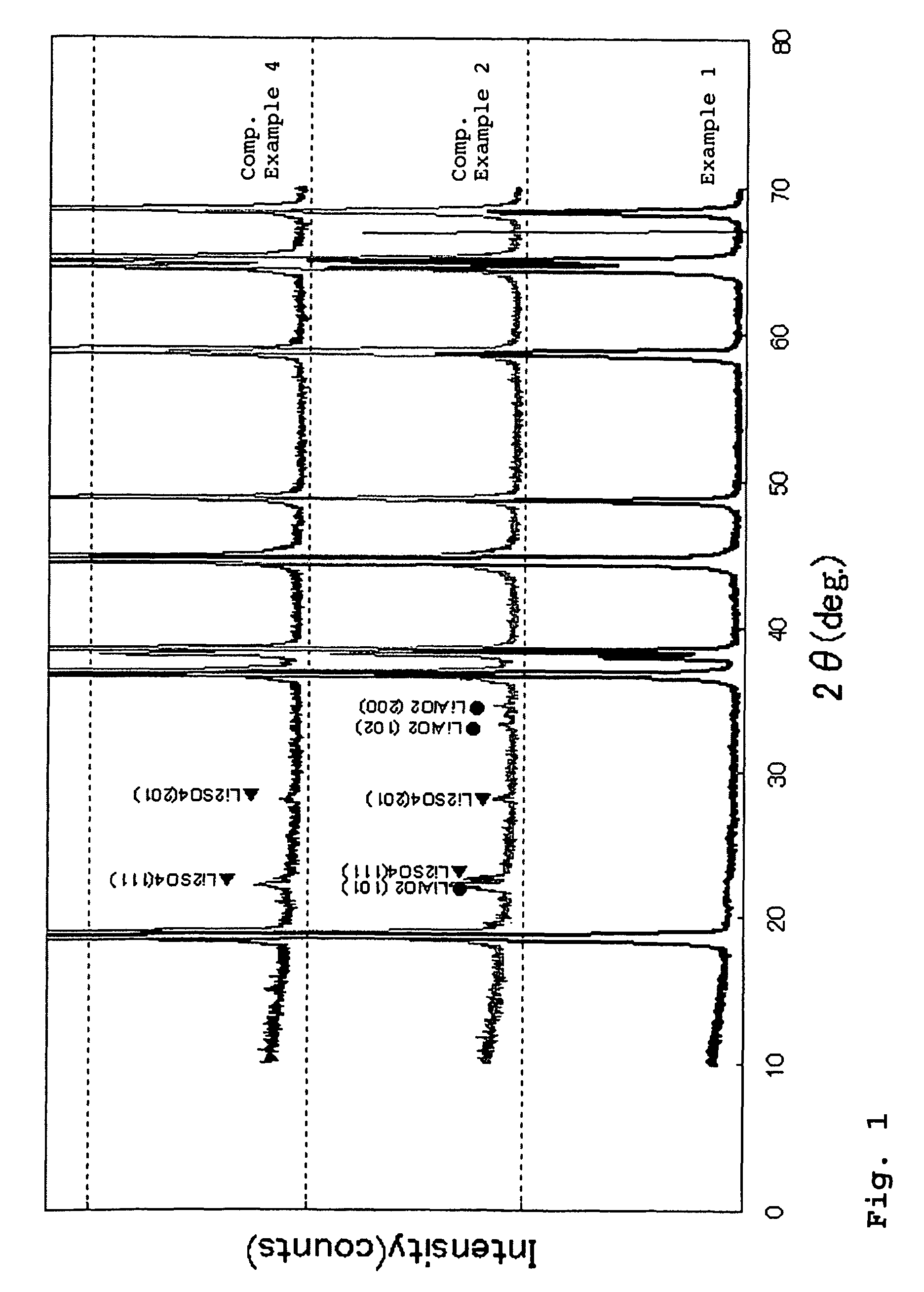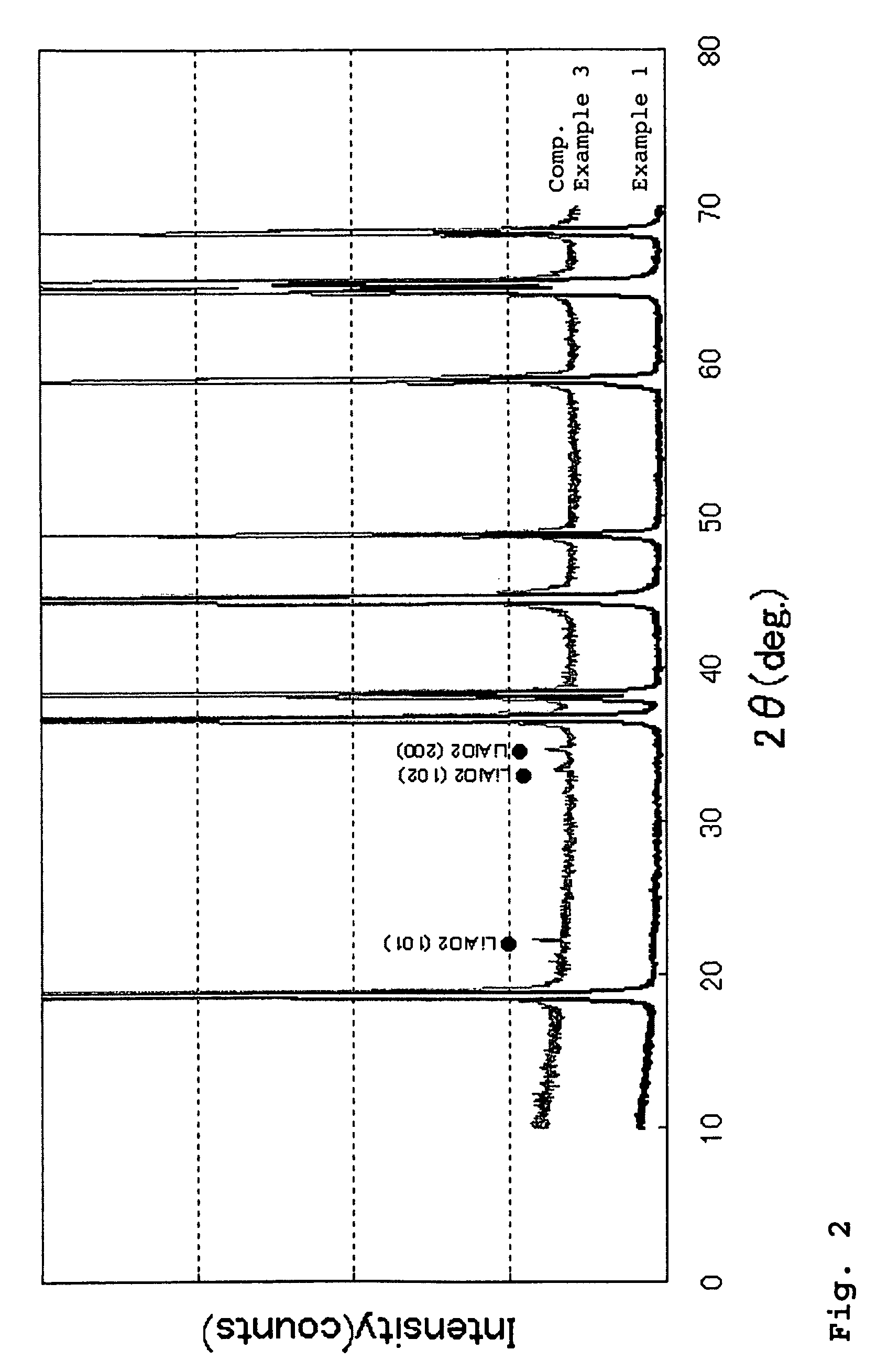Li-Ni composite oxide particles for non-aqueous electrolyte secondary cell, process for producing the same, and non-aqueous electrolyte secondary cell
a non-aqueous electrolyte secondary cell and composite oxide technology, applied in the direction of nickel compounds, sustainable manufacturing/processing, non-metal conductors, etc., can solve the problems of deterioration in thermal stability and storage performance of the cell, failure to solve the above-described problems, and material thermal stability tends to be deteriorated, so as to reduce the variation in properties, prevent the effect of increasing the electric resistance and suppressing the occurrence of the reaction
- Summary
- Abstract
- Description
- Claims
- Application Information
AI Technical Summary
Benefits of technology
Problems solved by technology
Method used
Image
Examples
example 1
[0102]An aqueous solution prepared by mixing 2 mol / L of nickel sulfate with cobalt sulfate at a mixing ratio of Ni:Co of 84:16, and a 5.0 mol / L ammonia aqueous solution were simultaneously fed to a reaction vessel.
[0103]The contents of the reaction vessel were always kept stirred by a blade-type stirrer and, at the same time, the reaction vessel was automatically supplied with a 2 mol / L sodium hydroxide aqueous solution so as to control the pH of the contents in the reaction vessel to 11.5±0.5. The Ni—Co hydroxide produced in the reaction vessel was overflowed therefrom through an overflow pipe, and collected in a concentration vessel connected to the overflow pipe to concentrate the Ni—Co hydroxide. The concentrated Ni—Co hydroxide was circulated to the reaction vessel, and the reaction was continued for 40 hr until the concentration of the Ni—Co hydroxide in the reaction vessel and a precipitation vessel reached 4 mol / L.
[0104]After completion of the reaction, the resulting suspens...
example 2
[0108]The same procedure as defined in Example 1 was conducted except that a sodium aluminate aqueous solution was continuously fed to the reaction vessel such that a molar ratio of (Ni+Co):Al in the resulting mixture was 97:3, thereby obtaining Li—Ni composite oxide particles having a chemical composition of Li1.02Ni0.82Co0.15Al0.0302.
example 3
[0109]The same procedure as defined in Example 1 was conducted except that the concentration of the mixed aqueous solution of nickel sulfate and cobalt sulfate, the concentration of the ammonia aqueous solution, the pH upon the reaction, and the concentration velocity in the concentration vessel, were varied, thereby obtaining Li—Ni composite oxide particles having a chemical composition of Li1.02Ni0.8Co0.15Al0.0502 and an average particle diameter of 14.5 μm.
PUM
| Property | Measurement | Unit |
|---|---|---|
| density | aaaaa | aaaaa |
| primary particle diameter | aaaaa | aaaaa |
| packing density | aaaaa | aaaaa |
Abstract
Description
Claims
Application Information
 Login to View More
Login to View More - R&D
- Intellectual Property
- Life Sciences
- Materials
- Tech Scout
- Unparalleled Data Quality
- Higher Quality Content
- 60% Fewer Hallucinations
Browse by: Latest US Patents, China's latest patents, Technical Efficacy Thesaurus, Application Domain, Technology Topic, Popular Technical Reports.
© 2025 PatSnap. All rights reserved.Legal|Privacy policy|Modern Slavery Act Transparency Statement|Sitemap|About US| Contact US: help@patsnap.com



